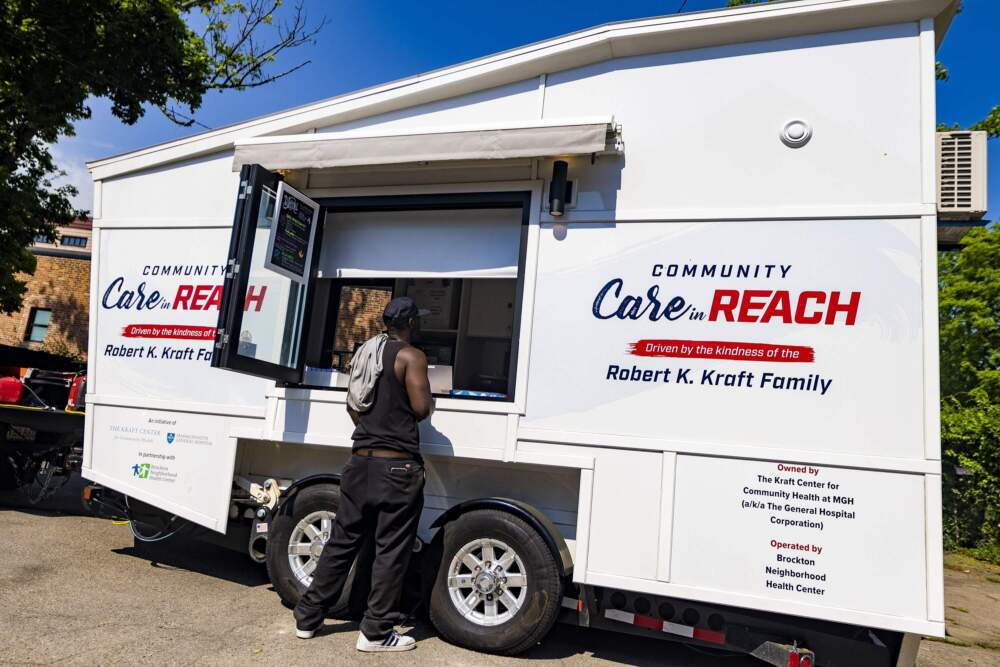Advertisement
Ambitious federal effort to curb overdoses shows no impact on deaths, initial study finds
A multi-million-dollar effort by the federal government to reduce opioid deaths in four states over three years has resulted in no decrease in deaths, according to a new study out of the New England Journal of Medicine.
The ambitious program by the National Institutes of Health known as the HEALing Communities Study, launched in January 2020, aimed to cut overdose deaths by 40% over three years. It sent $349 million to Kentucky, New York, Ohio and Massachusetts, funding 615 strategies research has shown are effective in treating an addiction to opioids and preventing fatalities.
The researchers’ findings were based on a comparison of communities that received money and support at the beginning of the study to those that did not get money until later on. The latter group received funds and began their interventions after the one-year comparison period ended.
Dr. Redonna Chandler, who directed the HEALing Communities study and its comparative review through the National Institute on Drug Abuse (NIDA), said researchers knew a 40% reduction was unlikely but the target helped motivate and rally participants.
“We needed a big audacious goal,” said Chandler. “We needed a moonshot kind of goal.”
Chandler listed three reasons the vast effort involving 67 communities and hundreds of local groups had no impact on the rate of fatal overdoses. She said the study started as COVID-19 swept the U.S., making it difficult to hold meetings, purchase goods, hire staff and begin work on the streets, in clinics or hospitals. Only 38% of the projects the communities selected for grant funding were in place in July 2021, when the comparison research began.
The pandemic upended the drug supply making it more toxic overall, creating a second unexpected challenge for researchers. Some dealers were selling fentanyl, a key driver of overdose deaths, in place of cocaine or other drugs because this synthetic opioid was easier to obtain at times during the pandemic. Overdoses also increased as treatment programs limited intake, more people used alone and Narcan was often harder to find. There were more than 107,000 deaths in 2021 — a record high — as the study period began.
And finally, the study period wasn’t long enough to see new programs reverse overdose death rates, said Dr. Jeffrey Samet, a primary care doctor at Boston Medical Center who led the work in Massachusetts.
“We were carrying out the study during a very active period of the opioid epidemic,” said Samet. “Between COVID and the relative brevity of time for these changes to be carried out, we understand what needs to be done going forward.”
Deaths did decrease in Massachusetts in 2023, a year after the study ended, but not uniformly. Fatalities declined substantially for white people who use drugs statewide, dropped modestly for Hispanics and rose for Blacks men while remaining flat for Black women.
Samet said he doesn’t have proof that the coordination among local groups, public information campaigns or new services made a difference. But Allyson Pinkhover, who joined one of the local coalition advisory groups in Massachusetts, said the study deserves some credit for a substantial drop in fatal overdoses in Brockton, where she works.
“A one-year evaluation timeframe is pretty short,” said Pinkhover, director of substance use services at the Brockton Neighborhood Health Center. “There are a lot of projects you have to evaluate over a longer term.”
Advertisement

Pinkhover said the study proved that when you give communities funding and time to work together to solve problems they can. However, she noted that sustaining some of the work the study paid for in Brockton has been hard. Pinkhover had difficulty keeping a mobile harm reduction and treatment program going after the study ended but eventually received some money from the state of Massachusetts to continue this service.
While the project did not meet its key goal of reducing overdose deaths, Chandler at NIDA said there is still a lot to learn from the study results and the process it tested: bringing public health, religious, law enforcement and other community leaders together to tackle the opioid crisis. She said researchers plan to assess the project’s impact on non-fatal overdoses, helping people start treatment, stigma and access to naloxone, the drug that can reverse an opioid overdose.
